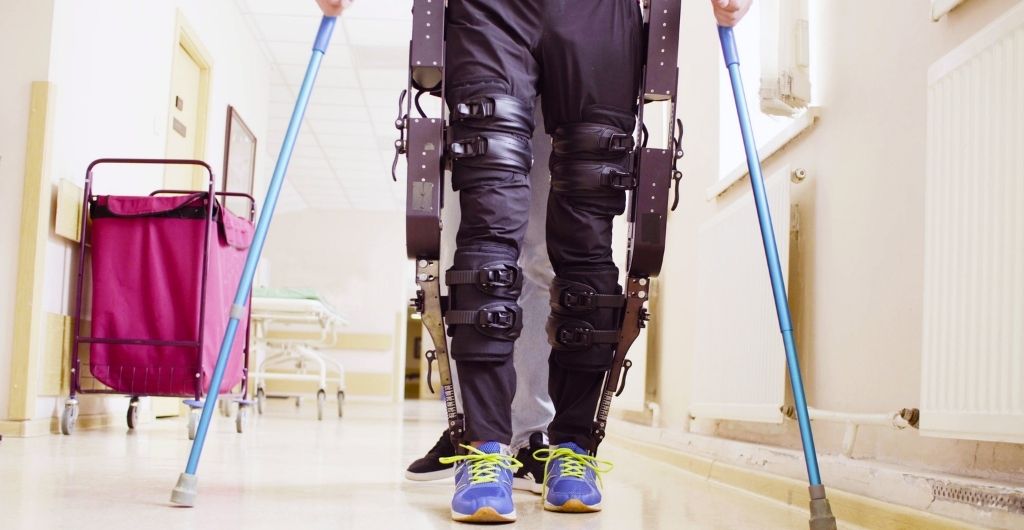
Around 50,000 people in the UK live with a spinal cord injury. To those who are injured, regaining movement is life changing – and advances in exoskeleton technology are helping to renew their independence. Here, Stewart Goulding, managing director of precision drive system supplier, Electromechanical Systems (EMS), shares insight into the motor technology powering rehabilitation exoskeleton systems.
Paraplegia is a condition involving impairment to the motor or sensory functions of the lower half of the body, which can be caused by physical injury or other conditions, such as a spinal stroke. When lower limb movement is impaired, patients must often adapt to life in a wheelchair.
Wheelchairs provide improved mobility, independence and quality of life. However, long periods in a chair can lead to the formation of other health issues such as pressure ulcers and osteoarthritis.
As a result, physiotherapy is essential to prevent secondary medical issues, but getting patients moving typically requires two to three health professionals, a set of crutches and a treadmill.
Advances in powered medical devices are helping to mobilise patients with less physical support. Exoskeletons, which were originally created to prevent strain in factory workers, are becoming increasingly common in the healthcare sector to help patients regain movement in rehabilitation therapies.
Exoskeletons have controls, sensors and motors to mechanically move parts of the body, with an accompanying battery back that is worn on the patient’s back. Some models require the use of crutches, but those without are generally bulkier to provide additional support.
Valuable benefits
Exoskeletons allow injured patients to stand and walk with minimal assistance from physiotherapists, and many exoskeletons can even be fitted independently by the patient. The immediate benefit of this is allowing an increase in physical activity, with exoskeletons being able to perform a range of movements.
Increased movement offers many health benefits, providing relief from the wheelchair to boost blood flow and help the patient relearn step patterns and weight shifts, so they can regain as much of their natural gait as possible.
The patient uses the exoskeleton for increasing time periods to build up their strength and balance. The freedom of the exoskeleton can provide patients with additional motivation to persevere with a long term exercise plan
Along with physical benefits, rehabilitation exoskeletons improve the patient’s quality of life, providing increased independence and greater mobility, which can positively impact both their physical and mental wellbeing. Even being able to stand and meet another person at eye level can be invaluable to the patient.
Thoughtful design
When selecting the motors that deliver the optimum degree of torque and motion control for high performance exoskeletons, design engineers need precision systems that can closely replicate human movement.
Fine speed control allows the patient to instruct the exoskeleton to perform a range of tasks, from walking at pace to slowly navigating a steep incline. Motors must also have the ability to work under load, such as when the patient is in a seated position or on a staircase.
The motors should have a high torque to power these movements, as the patient’s legs will need to be completely assisted by the exoskeleton. However, high power must also be matched with small size and low weight to minimise weight and bulk of the exoskeleton and make it more comfortable for the patient to wear.
Spinal cord injuries significantly impact a patient’s life, and commonly result in life spent in a wheelchair. Rehabilitation exoskeletons allow the patient freedom from their chair to stand and walk again, providing valuable physical and mental benefits.












